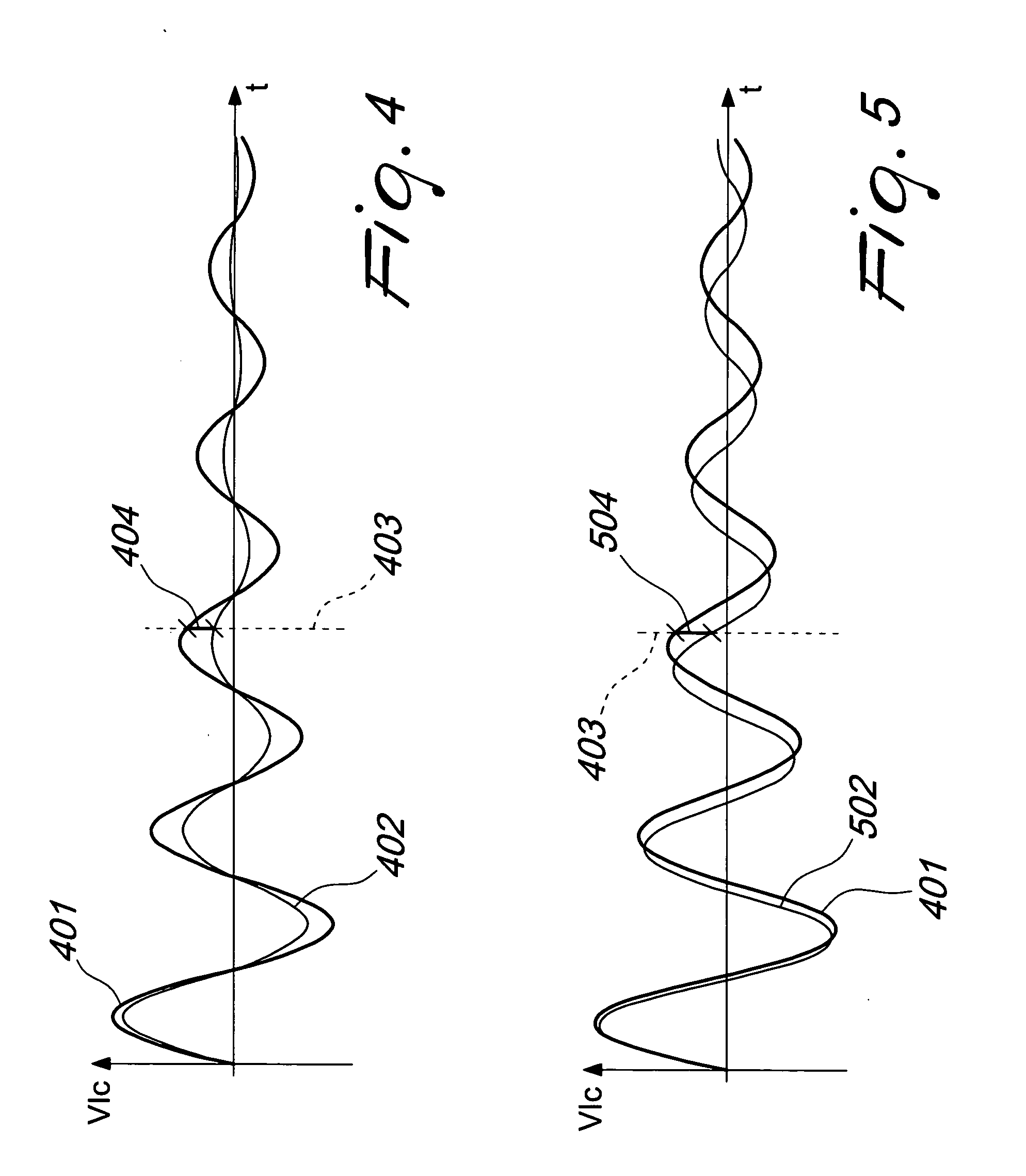Inductive proximity sensor, particularly for sensing presence of ferrous and non-ferrous materials
- Summary
- Abstract
- Description
- Claims
- Application Information
AI Technical Summary
Benefits of technology
Problems solved by technology
Method used
Image
Examples
Embodiment Construction
[0028] With reference to FIG. 1, a sensor according to the invention is generally designated by the reference numeral 100 and comprises a pulse generator 110, which is connected to the input of a resonant circuit 120. The pulse generator, according to a preferred embodiment, comprises a quartz oscillator, by means of which it is possible to generate periodically a voltage pulse. As an alternative, the pulse generator can comprise a ceramic resonator or an appropriately stable R-C circuit.
[0029] The resonant circuit is preferably of the parallel L-C type, i.e., it comprises an inductor and a capacitor connected in parallel. In alternative embodiments, the resonant circuit can be of the series L-C type or a tuned amplifier or more generally a circuit that comprises at least one inductor and a resonance frequency.
[0030] The output of the resonant circuit is connected to control means 130, which are preferably constituted by an analog-digital device that is capable of storing informat...
PUM
 Login to View More
Login to View More Abstract
Description
Claims
Application Information
 Login to View More
Login to View More - R&D
- Intellectual Property
- Life Sciences
- Materials
- Tech Scout
- Unparalleled Data Quality
- Higher Quality Content
- 60% Fewer Hallucinations
Browse by: Latest US Patents, China's latest patents, Technical Efficacy Thesaurus, Application Domain, Technology Topic, Popular Technical Reports.
© 2025 PatSnap. All rights reserved.Legal|Privacy policy|Modern Slavery Act Transparency Statement|Sitemap|About US| Contact US: help@patsnap.com



